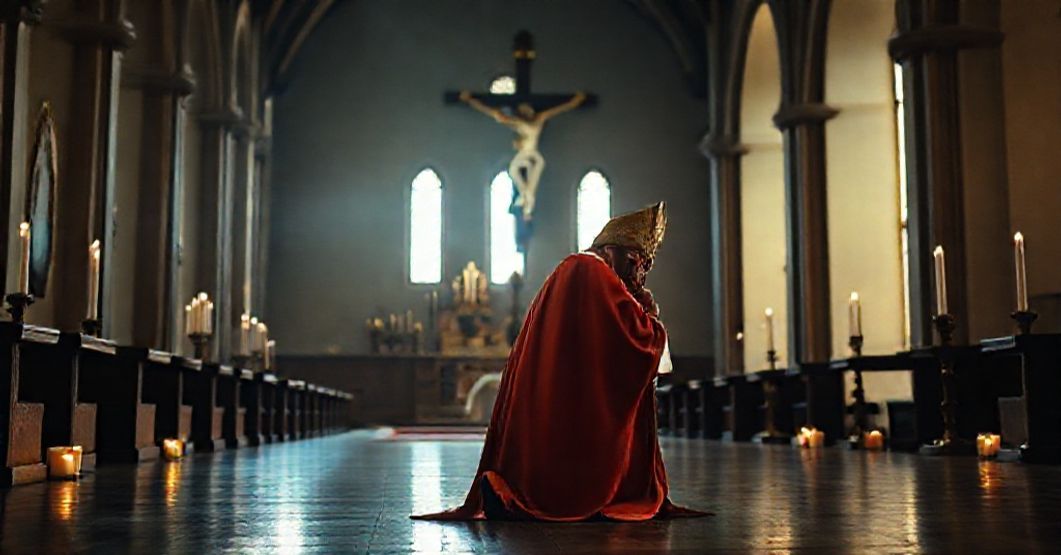Bankruptcy of a Diocese: Symptom of Conciliar Apostasy
Bankruptcy of a Diocese: Symptom of Conciliar Apostasy
Portal Catholic News Agency reports that the “Diocese” of Alexandria, Louisiana, has filed for Chapter 11 bankruptcy protection (October 31, 2025), becoming the 41st such entity in the United States to seek court-supervised reorganization due to clergy sexual abuse claims. The “bishop” Robert Marshall Jr. issued an apology video declaring this action necessary because “some past priest-perpetrators sexually abused minors,” while emphasizing that parishes remain “untouched” by the filing. The “diocese” cites 85 abuse claims with more expected, listing $16.7 million in assets and pledging $4 million plus insurance proceeds to a compensation fund. This occurs alongside a “reorganization plan” titled “Together as One Church: Embracing the Future of Hope,” which will entail parish closures amidst declining sacramental participation.
Naturalism Replaces Sacramental Justice
The conciliar sect’s response to clerical crimes exposes its abandonment of ex opere operato (the efficacy of the sacraments) theology. Rather than prescribing canonical trials, public penance, and spiritual reparation through the Most Holy Sacrifice of the Mass, these structures adopt secular bankruptcy courts as arbiters of justice. Marshall’s video apology reduces the Church’s response to financial settlements and bureaucratic processes, utterly ignoring the necessity of sacramental confession for perpetrators and the obligation to restore desecrated sanctuaries through liturgical acts of expiation. This mirrors the modernist heresy condemned in Pius X’s Lamentabili Sane (1907), which rejected the proposition that “the Church listening cooperates […] with the Church teaching” (Proposition 6) – here replaced by civil courts dictating ecclesial affairs.
“As your bishop, I apologize to abuse survivors for the harm, pain, and suffering they experienced and continue to experience in their lives.”
This statement exemplifies the conciliar inversion of priorities: sentire cum hominibus (to feel with men) replaces sentire cum Ecclesia (to think with the Church). True Catholic shepherds would first lament the sacrilegium (sacrilege) against the Mystical Body before addressing psychological harm. The 1917 Code of Canon Law (Canon 2359 §2) mandated defrocking and imprisonment in a monastery for clerical abusers – penalties requiring ecclesiastical authority, not bankruptcy judges.
Bankruptcy as Ecclesiological Heresy
By declaring that “parishes […] remain untouched” while the central structure collapses, these conciliar entities reveal their Protestant ecclesiology. This contradicts the dogmatic teaching of Vatican I (Pastor Aeternus, Ch.3): “In this way, by the unity of the Catholic faith, the whole Church is one body of one Head”. A diocese declaring bankruptcy while claiming exempt parishes constitutes operational Nestorianism – dividing Christ’s indivisible Mystical Body. The $4 million compensation pledge constitutes blood money, recalling the 30 pieces of silver (Matthew 27:3-5), since no amount of financial restitution can replace the requirement of sacramental reconciliation and restoration of damaged souls through grace.
Demographic Collapse: Fruit of Liturgical Desecration
The admission of “declining numbers of priests, seminarians, and Mass attendance” directly results from the conciliar revolution’s liturgical abuses. Statistics confirm catastrophic declines:
- Priests per U.S. Catholic: 1:650 in 1950 vs. 1:1,800 today
- Mass attendance: 75% in 1958 vs. 21% post-“pandemic”
As Pius XI warned in Quas Primas (1925), societies rejecting Christ’s reign become “shaken towards destruction”. The “Together as One Church” restructuring plan continues this apostasy by closing parishes rather than restoring the traditional liturgy – the only proven source of authentic renewal. This demographic collapse fulfills Pius X’s prophecy in Pascendi Dominici Gregis (1907) that Modernism would leave the Church “a thing of ashes, a corpse”.
Conciliar Complicity in Moral Devastation
The article’s reference to Louisiana’s 2021 law lifting abuse statutes of limitations exposes the conciliar sect’s decades-long failure to root out predators. Whereas true Catholic discipline required immediate removal of accused clergy (1917 CIC Can. 2303), post-conciliar structures retained homosexual predators under the guise of “therapy” and “mercy”. The “safe environment policies” mentioned constitute bureaucratic theater, having failed to prevent 85 new claims in Alexandria alone. This institutional corruption stems from Vatican II’s Dignitatis Humanae, which abandoned the Church’s right to judge and punish moral crimes under Canon Law.
Financial Mismanagement as Systemic Apostasy
The projected $1-2 million bankruptcy fees reveal the conciliar sect’s transformation into a corporate entity. Contrast this with the pre-conciliar Church’s financial stewardship exemplified by St. Pius X’s Fin Dalla Prima Nostra (1903), which prioritized sacramental economy over worldly finance. By funneling funds into abuse settlements rather than Mass foundations, these structures commit institutional simony – treating grace as a commodity to be balanced on spreadsheets. The $230 million New Orleans settlement mentioned equals the cost of 7,666 traditional seminarians educated for priesthood – a demographic hemorrhage directly caused by conciliar apostasy.
Omission of Supernatural Remedies
Nowhere does Marshall mention Christ’s Kingship, the need for Eucharistic reparation, or the Sacrament of Penance. The article’s silence about spiritual solutions proves the conciliar sect’s naturalism – what Pius IX condemned in the Syllabus of Errors (1864) as reducing religion to “human reason […] the sole arbiter of truth” (Proposition 3). True Catholic response would require:
- Public Forty Hours Devotions in reparation
- Consecration of the diocese to Christ the King
- Canonical trials for living predators
- Foundation of contemplative monasteries to pray for victims
Instead, the “diocese” chooses corporate liquidation – the final earthly symptom of its spiritual bankruptcy.
Source::
Diocese of Alexandria in Louisiana files for Chapter 11 bankruptcy (catholicnewsagency.com)
Article date: 03.11.2025
